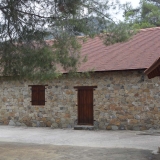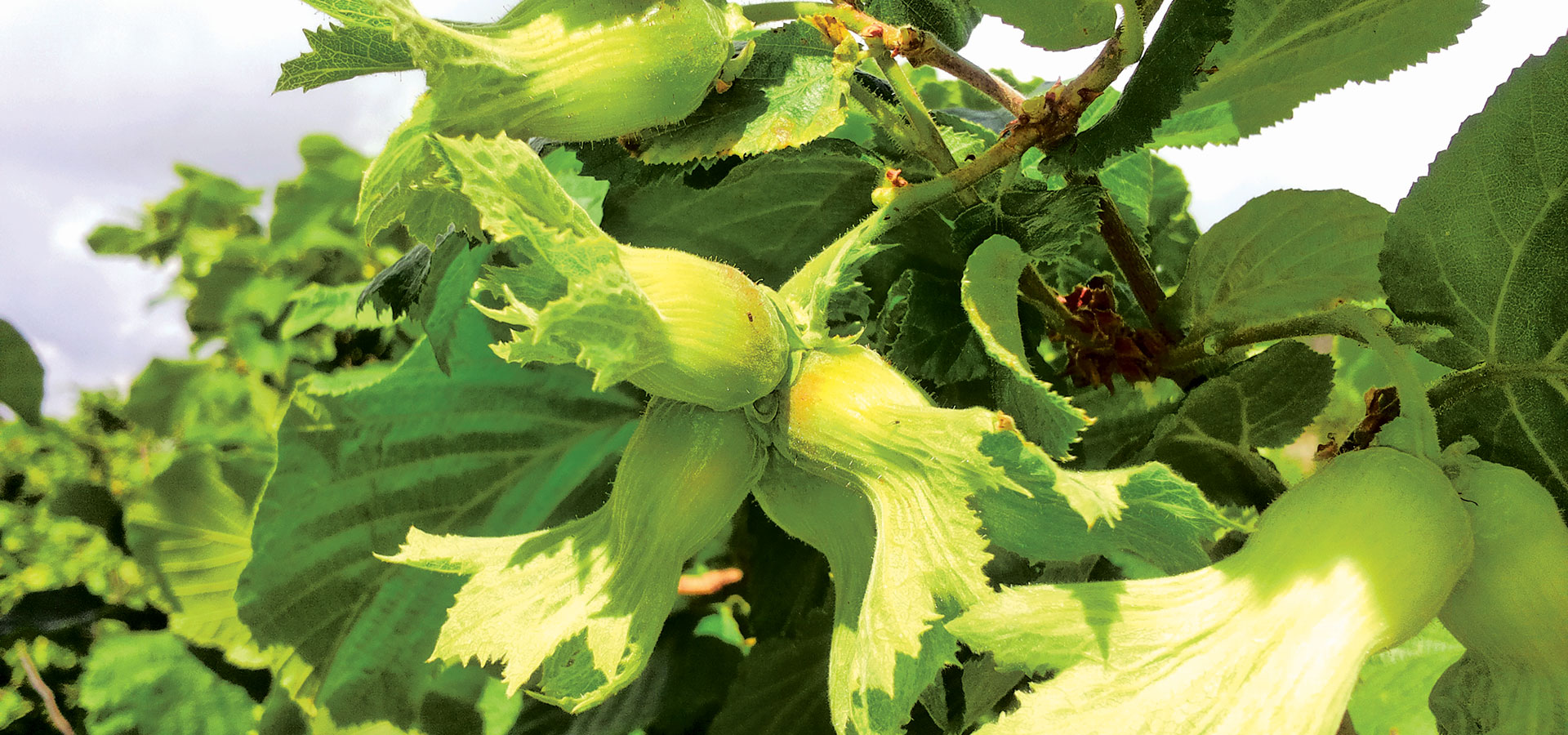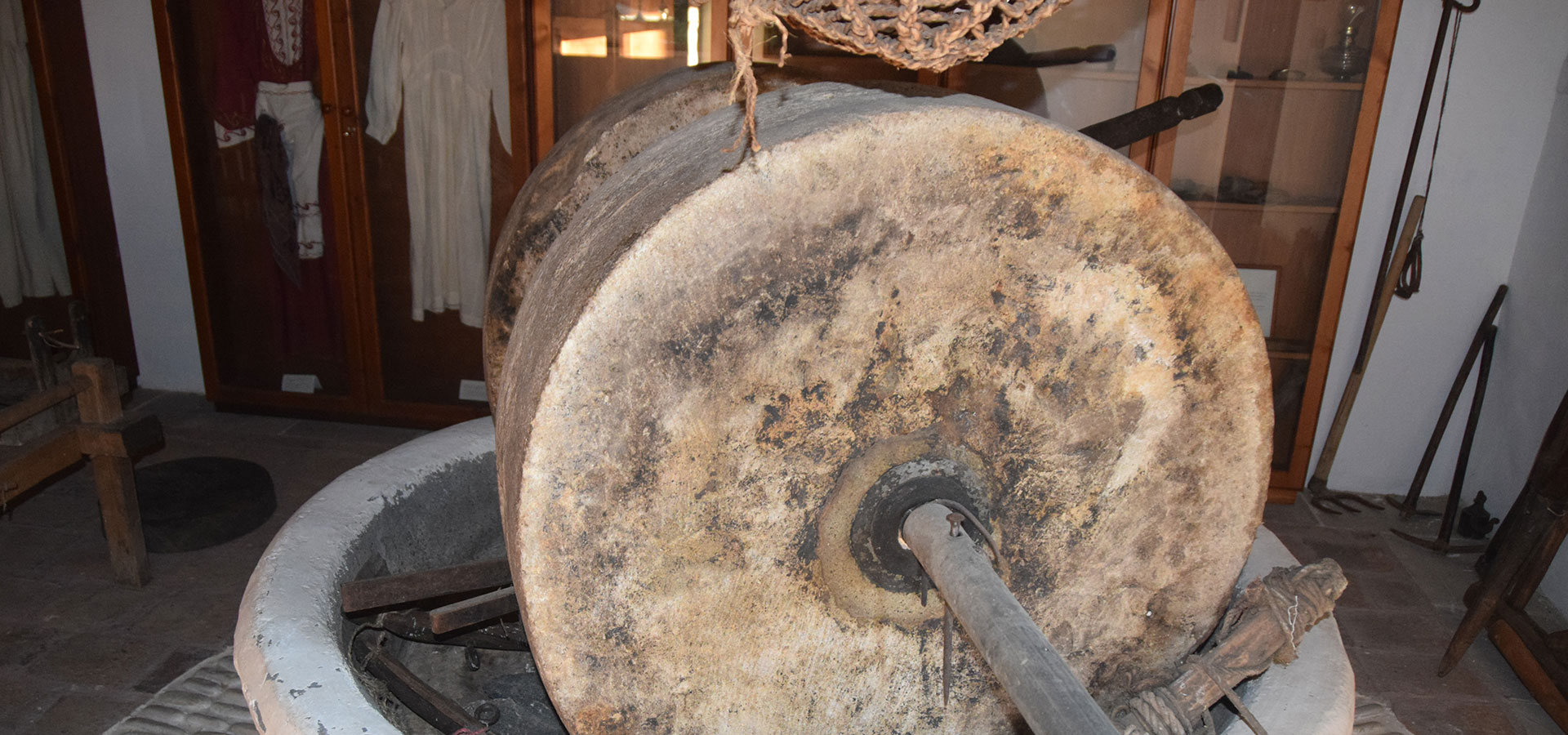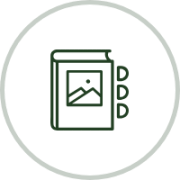Stavros tou Agiasmati
The temple of the Holy Cross of Agiasmati is on the mountain range of Troodos ,about six kilometers north west of the village of Platanistasa in the hug of a small enchanting green valley.The temple is of monoclite type wooden roofed ‘Frankish Byzantine’temple with slopping roof and it is surrounded from a closed loft. Inside, the whole space is covered with murals .The west wall is also covered with murals and the space above the south entry of the temple.
The temple is a remainder of the monastery with the same name, as the epigraph that is on the inside of the temple above the south door, confesses. In addition to that, if someone digs in the area around the temple he will find ruins of buildings. On the north west of the temple there are ruins of a smaller temple, Timiou Prodromou.
In order for a visitor to go to the temple of the Holy Cross the Agiasmati ,if he comes from Nicosia ,he has to follow the way Nicosia Troodos and when he reaches Peristerona Morphou to follow the way Peristerona –Orounta Kato – moni – Gefiri Panagia to Platanistasa .In about three kilometres out of Platanistasa he will find on his right a nice turnpike and by following it he will be led to the Cross of Agiasmati.Another way is the one which goes from Anthoupoli to Palehori but at some point we turn right towards Agrokipia (road to Platanistasa).
Before starting a trip someone should know that he will find the temple open. he has to call previously (tel:22652562) at Platanistasa and ask for the man who holds the key of the temple to talk with him and be there to open up or go himself at Platanistasa and bring him there.
THE HISTORY OF THE TEMPLE
When exactly the Monastery of the Holy Cross of Agiasmati was founded we don’t really know. According to Nearhon Kleridi it was founded after 817 after Christ.
During the years The Monastery was ruined and the today saved temple was deeply redecorated as the epigraph that exists inside the temple above the north door mentions.
During the years ,the temple remained without care and service .Pines and wild plants grew around it and they covered it .The shepherds who grazed their goats in this unreachable place enclosed them in the closed loft of the temple and in the winter they lit a fire to be kept warm.
In the end of the 19th century The Sacred Metropolis of Kyrenia donated the land of the Monastery to residents of the nearby village Platanistasa with the condition to cultivate the land and plant trees and to have half of the fruits. In 1946, The Sacred Metropolis of Kyrenia sold through auction the cultivated fields of the Monastery except the small forest on the west and south west of the temple and some fields around it.
Until the year 1964, there was no road to join the main road of Nicosia –Platanistasa with the Monastery. The person who wanted to admire the murals of the temple of the Cross of Agiasmati had to go on foot, following one of the two paths: the first one was uphill and inaccessible, short though, the other was quite passable but farther. In the winter in 1964-65, the government opened the beautiful road from the point the second path began, a distance of about 4 kilometers and joined the Monastery with the main road of Nicosia –Platanistasa.Nowadays there is another way that joins the Monastery with the road of Xiliato-Lagoudera.
In any event, however the pilgrim reaches the temple, he will feel a huge compensation for the labor he made to go there.He will see in front of him an immense view that gives rest to the eyes. Around it there are hills.greenery,small valleys with vineyards ,almond trees and other fruitful trees.And at the place where there are no vines and fruitful trees there are pines and wild plants .Further down, the chute and wild mountainsides are covered by pines whose colour changes according to the distance you watch them .The ones that are closer are green and the ones that are in the depth are navy blue. In the depth of the scenery there are the fertile plains of Morfou and of Mesaoria and further down Pentadaktilos, the dark mass closes the horizon.
Πάντως, με όποιο τρόπο και αν φτάσει ο προσκυνητής στο Μοναστήρι τούτο, θα αισθανθεί μεγάλη αποζημίωση για τον κόπο που κατέβαλε για να φθάσει εκεί Θα δει μπροστά του, να απλώνεται ένα εκτεταμένο θέαμα που ξεκουράζει τα μάτια. Γύρω του λόφοι, καταπράσινοι, μικρές κοιλάδες με αμπέλια, αμυγδαλιές και άλλα καρποφόρα δένδρα. Κι’ όπου δεν υπάρχουν αμπέλια και καρποφόρα δένδρα, φυτρώνουν πεύκα και άλλη άγρια βλάστηση. Πιο πέρα, τις απότομες και άγριες βουνοπλαγιές, καλύπτουν πεύκα, που το χρώμα τους αλλάζει ανάλογα, από την απόσταση που τα βλέπεις. Αυτά που βρίσκονται πιο κοντά, είναι πράσινα και αυτά που βρίσκονται στο βάθος, παρουσιάζουν μια γαλάζια όψη. Στο βάθος, πέρα μακριά, εκτείνονται οι καρπεροί κάμποι της Μόρφου και της Μεσαορίας και πέρα, απόμακρα, κλείει τον ορίζοντα ο σκούρος όγκος του Πενταδάκτυλου.
A joy for the eye is the rise of the sun from the far away sea of Famagusta.you can watch it to rise in the horizon ,a big red circle with a weak shine ,until it goes up the sky and blinds your eyes. At summer nights ,but at winters too when there is no mist you can see the plains as a starry sky with the numerous electrical lights to twinkle,whle there is dark around you and complete silence that is interrupted by the screech owl ‘s voice and the cricket’s mourning.
During the day all kinds of birds, from the beautiful partridge and the voracious jaybird until the sweet word nightingale and the winged nightingale delight the hearing with their different kinds of woodnotes. The clean air fills the lungs and delights the nose. The digestive water of a cool fountain is waiting for you to kick your thirst away. An immense silence and serenity which is appropriate in a Monastery environment, smooths your soul, the tired one from the noise and the problems of the bustling city and the daily stress of life.
According to the two epigraphs the reconstruction of the temple and its hagiography were completed with the expenses of the head priest Petrou Perati and his priest’s wife Pepanis .The painter of the temple is Fillipos Goul.
The date is timeworn .In 1914 Peristianis, who visited the temple and it seems that then some letters were distinguished, he read 1477.Bakier later suggested the year 1466.A. Stylianou agreed for that year too.A .Papa Georgiou accepted that year too.
At the Cross of Agiasmati A. Papa Georgiou mentions that in his research that the west influence is more powerful while in the temple of Saint Mamas the painter stays closer to tradition.But this does not necessarily mean that the temple of Cross of Agiasmati was painted later than the temple of Saint Mamas in Louvara.
But let’s go now to the owner of this temple .He, according to the epigraphs, was named Petros and he was a head priest and married .His wife was named Pepani .It seems that by the time hagiography finished he had already died. That’s why the painter calls him ‘Kyron’.The epigraphs do not mention anything for his descent. According to the Scriptures Peratis meant foreigner.
The Duke ,one of the Historians of the Istanbul’s Capture (1453)mentions at the ‘Xroniko’on page 21 a place called Agiasmati in the Near East coast. Also,’Pera’ is also the place opposite Istanbul .It seems that the head priest Petros,who came to Cyprus which was then occupied by the Latins , came from these places and climbed up to the inaccessible mountains of Troodos because in the cities and at the valleys the Catholic church was dominant ,he spent for the reconstruction and the hagiography of the temple of the Holy Cross of Agiasmati and he probably gave the name Agiasmati himself to remember the place of birth and origin.
It is time now to go inside the temple and admire the excellent murals. At the top of the gable of the eastern wall, Christ is drawn ‘King of glory’ and underneath the Lady Day . On the north of the apses there are pictures of David, Daniel and the protomartyr Stefanos.At the clam of the Holy Intention the ‘Akra tapinosis(terminal humiliation)’and on the right another Deacon.
At the south of the apses there are drawn with the same order, Solomon, Esaias, Agios Lavrentios, (deacon).But in the square clam further down The Cross is drawn. At the fourth sphere of the apses Virgin Mary is drawn, standing and praying dressed as a Byzantine emperor with Christ between the Archangels Michael and Gabriel dressed as Deacons.
Further down The Communion of the Apostles is drawn, interesting from an iconographic view because it presents Christ to sit on the cathedra in front of the high altar and he offers, with his right arm, the holy bread to six students, at the left side of the viewer and with his left hand he offers the Holy glass to the other six students, at the right side of the viewer.
Further down between the windows of the apses there are drawn two Angels as Deacons holding fans and below the windows ,the high altar with Christ honey and two candlesticks while on the right and left there the following hierarch to officiate: Trffilios, Varnavas, Epiphanios, Hrysostomos on the left and Vasilios Grigorios (Theologian),Spiridon and Eraklidios on the right.
SOUTH WALL
The south wall is divided in two zones such as the north. On the eastern point, behind the iconostasis and inside the Holy Tread there are pictures in the upper zone of Saint Elefterios, Romanos and Melodos and Theofanis the poet, standing. At the down zone from the knees and on three Cypriot Saints: Tyhon, John Elaemon and Mnason. Inside the main temple at the upper zone there are pictures of: Zaharias and Elisabeth ,the Evangelists Matheos and Lukas ,Virgin’s Mary birth ,The entrance of Lady Mary , Christ’s birth ,The Welcome and under the two last scenes one of the epigraphs ,The Christening, Lazarus’s resurrection, Palm Carrier and the metamorphosis.
At the Zone below, Prodromos is there, as part of a pray, and at the drum of the blind arrow Archangel Michael. On the inside of the blind arrow we have, from the left to the right ,the miracle of Archangel Michael at Hones and four medals with Saint Tryfonas , Artemio,Nikita and Mina such as the familiar scene of the appearance of the Archangel and Jesus of Navy.
Further down we have Saint Kosmas standing on the left and Damiano on the right. On the right top of the arrow we have the Communion of Maria the Egyptian by Avva Zossima.There is the Apostle Pavlos next standing and at the web of the door, on the left the Stylite whose name has disappeared and on the right Simeon the Stilyte .On the west side of the door we have seven hermits standing: Antonios, Theodosius the Coenobitic leader, Arsenios Savvas, Kyriakos, Onoufrios and an unknown. Next there is Saint Demetrius.
At the top of the gable of the west wall, inside the Iris department of the arrow there is a picture of ‘the Older of Times’and the Holy Spirit as a tumbler and further down the Crucifixion. On the left there is the Prophet Elias and below him there is Christ. On the right it is Moses and further down the Removal of Christ from the Cross.
Under the harness and above the west entrance there are five scenes: The Last supper, the Washer, the Pray at the Gesthimani’s Garden, the Betrayal and Jesus in front of the priest Anna and Kayafa.
At the under zone ,on the south of the west door there is a picture of Saint Mamas on a lion and on the north there is Saint Georgios the horseman on a horse. On the south side of the west door there is a picture of Saint Sozomenos and, on the north it’s Saint Andronicus. There is an apotropaic Cross with each of them (to prevent the evil).
NORTH WALL
On the above raw the following scenes are drawn: Petro’s deny, Jesus in front of the Pilate ,the Deception ,the Epitaph lamentation ,the Fumbling of Thomas ,the Ascension , the Pentecost ,the Assumption, the Evangelists Marcos and John and further down , Prohoros and near the iconostasis Ioakim and Anna (who suffered a huge destruction).
At the Zone below there is a military Saint maybe its Saint Theodoros, an ascetic, Stefanos the New, John of the Scale, an unknown ascetic and another ascetic maybe Saint Efthimios.
A the west web of the door there is Saint John the Hut man and at the eastern Saint Alexios,’the God’s Man’. And the apotropaic Crosses together. On the east side of the north door it is Saint Nikolaos, Apostle Andreas and Apostle Petros.
At the drum of the blind arrow of the north wall ,the history of the finding the Holy Cross is pictured in ten scenes ,between the brachiums of a Cross and further down four military Saints:Theodoros the Tyron ,an unknown,and Sergio and Vakhos.In the inside the scenes with the Holy Cross are continued :The vision of Great Constantine, Great Constantine with the Cross in chief goes ahead against Rome ,Moses in front of the Burning Bush ,the Foundering of the Egyptians and the Rise of the Holy Cross. Further down these pictures there are Saint Pantelemon on the left and Saint John the Blazer on the right.
On the east of the blind arrow of the north wall there are pictures ,out of the iconostasis, of the Virgin Mary Petition, which together with Prodromos that is on the opposite south wall constitute the Prayer ,with Christ on the top of the gable of the eastern wall.
Behind the iconostasis and inside the Holy Tread, at the upper zone of the north wall, there are pictures of Kosmas the poet standing, John the Damascenes and a hierarch. At the down zone Jacob the God’s brother is pictured from the knees and up in a frontal posture and as a hierarch, the vision of Peter of Alexandria and Abraham’s sacrifice.Further down, there is a picture of Saint Andreas the Crete and a cherubim.
At the harnesses there are painted: the Holy Handkerchief, the Holy Ceramic, Saint Jacob the Persian, Saint Mercourios and Saint Nestor.The architrave of the iconostasis which is based on earth legs is also of the same period of time. Between the legs there are 11 στηθάρια with Saints forms which unfortunately before they were fixed they suffered scaling. The epigraphs which accompany the Saints are indiscernible. We read: Gregorios Armenias, Silvestros, Leontios, Gregorios the miraculous, Amvrosios the Servant.
Above the south door, in the outer side of the south wall, at the small blind arrow and around it there is a picture of the hagiographic performance ‘Άνωθεν οι προφήτες’ (prophets from above)’.On the western side there is Virgin Mary standing introduce the two donators, the priest Petro Perati and his wife Pepani, who offer kneeled the temple to Christ who sits on mercy seat. The biggest part of the outer side of the west wall, from the door’s height until the top of the gable ,is covered with the performance of the Judgment Day(that as it seems it’s not painted by Fillip Goul who painted the rest of the murals of the temple).
At the drum of the small blind arrow, above the west door it is painted Στ «η εις Άδου Κάθοδος», while on the inside of the arrow there are four more scenes that follow Resurrection «Πορευθέντες μαθητεύσατε πάντα τα έθνη», «Μη μου άπτου», the women who carried the Chrism in front of the void monument and the Apostles Petros and John to come on the monument.
On the north side of the door there are Saint Barbara, Saint Paraskevi, Saint Marina, and Virgin Mary standing.
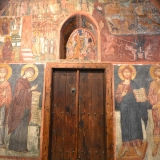



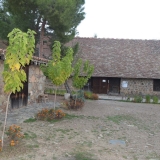



Church of Archangel Michael
In the village centre, the so called ‘Mesa Horio’at the height ,there is the big church of the Platanistasa Community dedicated to the Commander – in-chief of the celestial powers Archangel Michael and more specifically, at the ‘εν χωναις’ miracle of the Archangel Michael which our church celebrates on the 6th of September .This church ,a built of the 19th century situated in the place where another smaller church existed, full painted by hagiographies of the 15th century and which was demolished by our ancestors ,without knowing its value, has wooden roof and was redecorated and has its today’s shape in 1916.
In its yard, there was the village cemetery until 1941 where the today’s cemetery was built and the bones of the people, who were buried, were transferred in the yard of the Archangel Michael church. The visitor can admire the marvelous temple of this church and the excellent portable pictures which most of them are dated in the year 1883.
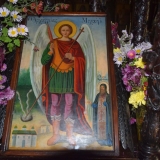
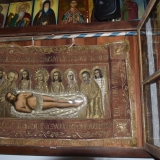

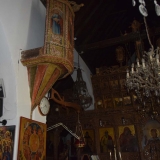


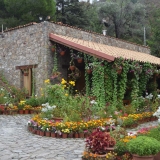
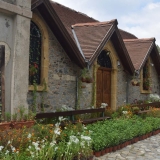




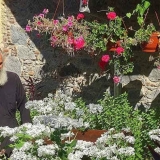


Church of Saint John the Theologian
In the Northern area of the village, the so called ‘Laoude’on the right side of the street,there is the church of Saint John the Theologian which was built in the same place of the previous church too, which was redecorated in the 17th century and was used as the main church of the village ,until the church of Archangel Michael was redecorated and took its today form. This church is of wooden roof too and has been lately mended by the archeological Department and with the contribution of the blessed benefactor of the village: Kyprianou Kouppa who spent money for the construction of the village square too. In this church the visitor can admire its excellent iconostasis of the 17th century and its portable pictures.
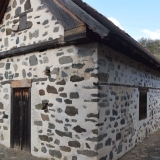

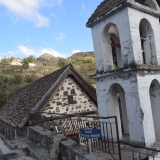
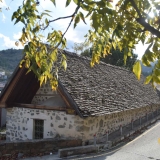
Church of the Virgin Mary the Katafigiotissa
In the southern area of the village ,at the ‘Gounari’at the height of the place ‘Katofidi’ in an enchanting pine-clad resort a newer chapel is built in the name of Virgin Mary ‘katafigiotissas’.This chapel was built with much love from the residents of the village for the Christ’s mother the mother of all the religious people and hurt Christians during the hard years of the epic fight of EOKA in 1955 – 59 in the memory of a deserted chapel with the same name which was further down, in the shadow of an eternal pistachio tree and which protected the Greek children of the village under its shelter during the years of the horrible Turkish mass kidnapping of children . A huge desire of the residents of Platanistasa is to have this chapel redecorated and the space around it to be beautified, to be a place of relaxation and praying for every visitor of the village and the residents.

